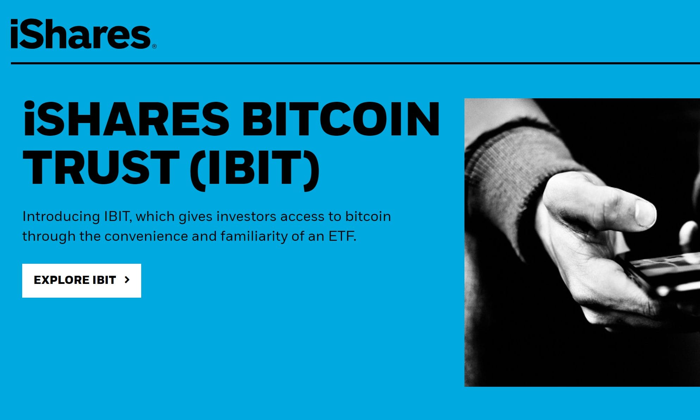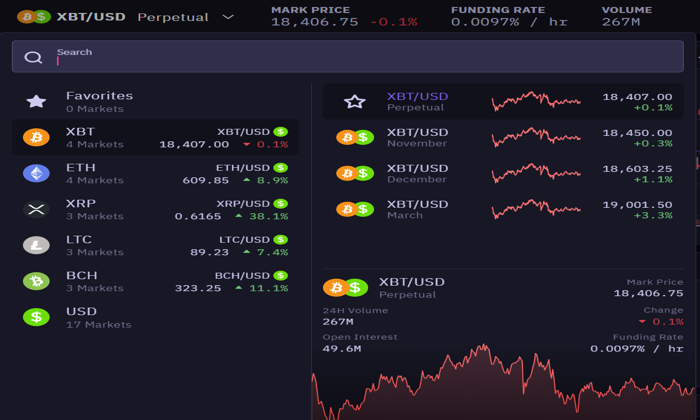In a bold declaration at the 2025 Bitcoin Conference, US Vice President JD Vance declared ‘Operation Chokepoint 2.0’ dead, signaling a significant shift in the regulatory landscape for cryptocurrencies. Vance’s announcement emphasizes the urgent need for crypto legislation that fosters regulatory clarity for digital assets, ensuring that they are fully integrated into the US financial system. This moment marks a departure from the stringent enforcement actions seen in previous administrations, paving the way for a more supportive environment for innovation in the cryptocurrency sector. As discussions around US digital assets policy evolve, the focus on eliminating outdated regulations promises to empower a burgeoning market, particularly for Bitcoin and stablecoins. With an estimated 50 million Americans already involved in crypto, Vance’s commitment to a pro-crypto stance could very well redefine the future of finance.
In recent discussions surrounding digital finance, Vice President JD Vance’s announcement regarding the demise of what some are calling Operation Chokepoint 2.0 has stirred considerable interest. This term encapsulates efforts by financial regulators that many argue hampered the growth of the cryptocurrency sector by limiting banking access. Vance’s vision for the future proposes not just the dismantling of these restrictive frameworks, but also the introduction of more favorable crypto regulations. His emphasis on regulatory clarity highlights an essential step towards integrating cryptocurrencies, such as Bitcoin, into the mainstream economy. With significant numbers of Americans adopting these digital assets, the conversation about US digital assets policy and comprehensive legislation is more relevant than ever.
JD Vance Champions the End of Operation Chokepoint 2.0
In a bold declaration during the 2025 Bitcoin Conference, US Vice President JD Vance proclaimed that Operation Chokepoint 2.0 is effectively ‘dead’. This statement marks a significant shift in the federal government’s approach to crypto legislation. By rejecting the previous administration’s restrictive policies, Vance aims to foster an environment of regulatory clarity for crypto advocates and enthusiasts. The symbolic end of Operation Chokepoint 2.0 signals a newfound commitment to integrating digital assets like Bitcoin into the mainstream financial landscape.
Vance expounded on the implications of this shift, suggesting it would provide a solid framework for the growth of the crypto industry. His promise to eliminate enforcement actions previously used to stifle innovation indicates a clear path towards a future where cryptocurrencies are welcomed rather than condemned. This message has resonated within the crypto community, encouraging investors and developers to engage with the legislative process as a way to support the establishment of a robust US digital assets policy.
The Importance of Legislative Support for the Crypto Industry
The crux of Vance’s speech at the Bitcoin Conference hinged on the necessity of legislative support for cryptocurrencies to thrive in the US economy. He highlighted that a comprehensive market structure bill for crypto is on the horizon, which seeks to provide the much-needed regulatory clarity that has been absent for far too long. Without proper legislation, there’s a looming risk that the burgeoning $3 trillion crypto industry could be pushed offshore, limiting innovation and potential economic benefits within the United States.
Vance’s advocacy for clearer regulations stands to empower consumers and investors while enhancing the legitimacy of cryptocurrencies like Bitcoin in the financial system. By establishing a legal framework that acknowledges and supports the role of digital assets, the administration hopes to ensure their stability and growth in a rapidly evolving economic landscape. This commitment to regulatory clarity can position the US as a global leader in cryptocurrency adoption, similar to trends witnessed in other countries.
Stablecoins as a Cornerstone of Crypto Legislation
A significant focus of JD Vance’s speech was the intention to legislate around stablecoins, indicated by mentioning the GENIUS Act. This proposed legislation aims to enhance the functionality and transparency of dollar-pegged stablecoins, viewing them not as rivals to the dollar, but as tools to fortify its global influence. By improving regulations surrounding stablecoins, the administration seeks to promote their acceptance and usage in everyday transactions, further integrating crypto into the traditional economy.
Furthermore, by emphasizing transparency requirements for stablecoin operations, Vance aims to build trust among users and financial institutions. This push for stablecoins aligns with the broader movement towards creating a secure and reliable digital asset ecosystem. As the market for cryptocurrencies continues to evolve, legislative efforts focused on stablecoins could serve as the foundation for future innovations, ultimately benefiting consumers by providing more choices and stable options in the increasingly volatile digital economy.
The Future of Bitcoin in the US Financial System
With an estimated 50 million Americans already owning Bitcoin, JD Vance’s vision of its expansive role within the US financial system is not just aspirational; it reflects a rapidly emerging reality. His acknowledgment of Bitcoin as a vital component of the economy comes at a time when many are looking for alternatives amidst economic uncertainty. By supporting Bitcoin’s legitimacy, the administration hopes to encourage further adoption and investment in digital assets, reinforcing the idea that cryptocurrencies are here to stay.
Additionally, Vance pointed out Bitcoin’s utility as a safeguard against the tumultuous policymaking that can arise from Washington’s political climate. By framing crypto as a ‘hedge’ against poor financial policy and inflation, he appeals to a broad audience concerned about their economic futures. The commitment to embedding Bitcoin into the financial fabric of the US signals a transformative era where digital assets aren’t merely speculative investments but crucial elements of economic strategy.
Regulatory Clarity as a Catalyst for Innovation
The call for regulatory clarity within the crypto realm cannot be overstated, especially as expressed by JD Vance at the Bitcoin Conference. He warned that without innovative and supportive legislation, the necessary advancements in technology and market participation could stagnate. By establishing clear guidelines for crypto operations, the US can attract entrepreneurs and investors, ensuring its dominance in the digital asset economy while simultaneously protecting consumers from unnecessary risks.
Moreover, regulatory clarity fosters a sense of security and legality for cryptocurrencies, which is essential for their integration into mainstream financial systems. As Vance proposes, the proactive engagement of Congress to create a conducive environment for digital assets and their operators signifies a potential paradigm shift in economic policy that prioritizes growth and innovation. This kind of legislative support is crucial to building a sustainable and thriving crypto ecosystem that can compete on a global scale.
Addressing Ideological Discrimination in Financial Services
JD Vance’s speech at the 2025 Bitcoin Conference also touched on an important issue facing the crypto community: ideological discrimination. He argued that access to financial services should not be dictated by political ideologies or personal views. This perspective emphasizes the need for decentralized networks that allow individuals to freely engage in economic activities without fear of bias or exclusion.
By advocating for an inclusive financial system, Vance strengthens the case for adopting cryptocurrencies as a means of circumventing the limitations often imposed by traditional financial institutions. The push for crypto-friendly policies not only reinforces freedom of financial expression but also binds the diverse interests of the crypto community together, promoting a unified front against restrictions imposed by ideological biases.
The Intersection of Politics and Cryptocurrency
Vance’s remarks about the end of Operation Chokepoint 2.0 naturally invite discussions around the intersection of politics and cryptocurrency. The sweeping changes proposed under the Trump administration signify a pivotal moment where the political landscape can significantly influence the trajectory of digital assets in the US. By embracing a proactive approach to crypto legislation, the administration showcases a commitment to transforming how cryptocurrencies are perceived in the political and economic arenas.
This realignment illustrates how political decisions can erase previous stigmas associated with the crypto market. With newfound political support, innovation can flourish without the burdens of excessive regulation that have historically proven detrimental to the growth of the industry. As digital assets become more ingrained in policy discussions, they will likely play a critical role in shaping the future of finance in Washington and beyond.
Public Confidence in Digital Assets Amidst Regulatory Reform
Building public confidence in digital assets is crucial, especially in light of the proposed regulatory reforms discussed by JD Vance. By ending stringent enforcement actions associated with Operation Chokepoint 2.0, Vance aims to restore trust in the crypto sector among consumers and investors alike. The assurance that the government will no longer engage in oppressive regulatory tactics allows individuals to view cryptocurrencies, particularly Bitcoin, as a legitimate and secure investment.
Additionally, as regulatory clarity begins to take shape, it is essential for the public to feel empowered about their choices in the digital asset space. Vance’s message not only seeks to streamline the relationship between crypto and traditional finance but also aligns with the broader objective of enhancing public understanding and acceptance of cryptocurrencies. This shift in perception is crucial for fostering greater participation in the digital economy and ultimately driving the growth of the sector.
Implications of Stablecoins on Global Financial Influence
The conversation surrounding stablecoins and their impact on the global financial system was significantly highlighted by JD Vance. By emphasizing that stablecoins should not be seen as a challenge to the US dollar, he argues they can serve as a ‘force multiplier’ for its reaching influence. This perspective challenges conventional views on digital currencies and suggests that stablecoins can enhance rather than undermine the US currency’s stability and worldwide standing.
With appropriate regulations in place, stablecoins could play a vital role in enhancing the efficiency of cross-border transactions and remittances, making the US dollar more competitive in the digital space. As the integration of stablecoins into mainstream finance progresses, it will become increasingly evident how they can bolster the dollar’s resilience and expansion, strategically positioning the US as a leader in both the digital and traditional financial arenas.
Frequently Asked Questions
What is JD Vance’s stance on Operation Chokepoint 2.0?
JD Vance declared Operation Chokepoint 2.0 “dead” during his address at the 2025 Bitcoin Conference. He emphasized that federal regulatory actions aimed at hindering the crypto sector would cease, highlighting a shift toward crypto-friendly legislation.
How does JD Vance’s declaration impact crypto legislation in the US?
JD Vance’s declaration signals a commitment to legislative support for the crypto industry, contrasting with the previous regulatory clampdown under Operation Chokepoint 2.0. This shift aims to provide regulatory clarity for digital assets, fostering growth and integration within the US financial system.
What did JD Vance suggest about the future of Bitcoin and crypto adoption?
JD Vance projected that the number of Bitcoin owners in the US could double, emphasizing Bitcoin’s role as a mainstream economic asset and a hedge against poor policymaking and inflation.
What is the GENIUS Act and how is it related to JD Vance’s crypto policy?
The GENIUS Act, supported by JD Vance, aims to expand dollar-pegged stablecoins while enforcing transparency requirements. Vance argues that stablecoins enhance the global influence of the US dollar rather than threaten it.
Why did JD Vance criticize Gary Gensler in his speech?
JD Vance criticized Gary Gensler for his regulatory approach toward digital assets. By stating that the Trump administration would continue to remove officials like Gensler, Vance emphasized a shift away from enforcement actions that stymied the crypto industry under Operation Chokepoint 2.0.
What are the implications of Operation Chokepoint 2.0 being declared ‘dead’?
The declaration of Operation Chokepoint 2.0 as ‘dead’ suggests an end to restrictive regulatory actions against the crypto industry. This could lead to a more favorable environment for innovation and investment in US digital assets policy.
How does JD Vance plan to ensure regulatory clarity for crypto?
JD Vance intends to work with Congress to enact a comprehensive market structure bill for crypto to provide the necessary regulatory clarity, preventing the potential $3 trillion crypto industry from moving offshore.
What relationship does JD Vance see between crypto and economic stability?
JD Vance views crypto, particularly Bitcoin, as a form of economic stability, positing that it serves as a hedge against inflation and poor fiscal policies, which resonate with many Americans seeking financial security.
How did JD Vance’s speech impact the perception of digital assets in the mainstream economy?
By asserting that digital assets like Bitcoin are integral to the mainstream economy, JD Vance’s speech at the Bitcoin Conference aims to positively shift public perception and legislative support for crypto following the challenges of Operation Chokepoint 2.0.
What are the potential risks highlighted by JD Vance regarding crypto regulation?
JD Vance warned that failing to provide regulatory clarity could drive the rapidly growing crypto industry offshore, undermining American leadership in digital assets development.
| Key Point | Details |
|---|---|
| Operation Chokepoint 2.0 Status | JD Vance declared it “dead” and ended federal regulatory actions against crypto. |
| Federal Regulatory Actions | Federal actions aimed at the crypto sector will not return, promising clarity for the market. |
| Legislative Support | Vance emphasizes the need for crypto-friendly legislation to secure digital assets’ place in the financial system. |
| Crypto Policy Goals | Secure Bitcoin’s integration into the mainstream economy and assert its value as part of financial stability. |
| The GENIUS Act | Aims to expand dollar-pegged stablecoins and impose transparency, enhancing the US dollar’s global influence. |
| Crypto as a Hedge | Vance describes cryptocurrencies as hedges against bad policy and inflation, safeguarding financial access. |
| Adoption Statistics | Currently, 50 million Americans own Bitcoin, with expectations for this number to double soon. |
Summary
JD Vance’s declaration that ‘Operation Chokepoint 2.0’ is dead marks a significant shift in the approach towards cryptocurrency regulation in the US. During his address at the 2025 Bitcoin Conference, Vance not only assured a halt to hostile federal actions but also called for proactive legislative support to ensure the integration and legitimacy of digital assets like Bitcoin within the American economy. The emphasis on creating a favorable regulatory environment for cryptocurrencies, alongside initiatives like the GENIUS Act, aims to empower the market and protect it from ideological discrimination. Vance’s vision aligns with a broader strategy to mainstream Bitcoin and stabilize its economic role, reassuring millions of Americans about the future of their investments in the crypto sector.
JD Vance Operation Chokepoint has become a pivotal topic in the ongoing discussion about US digital assets policy, especially following recent developments presented at the 2025 Bitcoin Conference. During his speech, Vice President Vance proclaimed the demise of Operation Chokepoint 2.0, signaling a commitment to establishing regulatory clarity for crypto assets. He emphasized the importance of legislative support for the crypto market, rejecting the previous administration’s restrictive measures which he deemed harmful to innovation. The announcement marks a significant shift toward a pro-crypto stance that could invigorate the industry, providing much-needed assurance for investors and entrepreneurs. With the support of new crypto legislation, Vance aims to promote an inclusive financial ecosystem where Bitcoin and other digital currencies can thrive.
In recent discussions surrounding U.S. digital currency regulations, JD Vance’s announcement regarding the cessation of Operation Chokepoint 2.0 has sparked significant interest within the crypto community. This term refers to the perceived regulatory framework that once stifled innovative financial technologies and restricted their integration with traditional banking systems. Vance’s assertive stance at the Bitcoin Conference indicates a pivotal moment for digital asset advocacy, underscoring a push for clear guidelines that encourage growth and adoption of cryptocurrencies. By championing legislative reform, Vance aims to counteract previous federal actions and align the crypto industry within a robust legal framework. The conversation surrounding this transition is crucial, as it addresses the necessity for transparency and security in the evolving realm of digital currencies.















